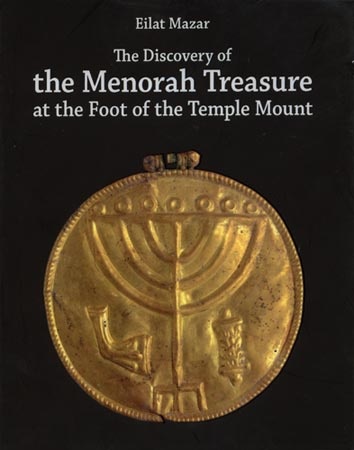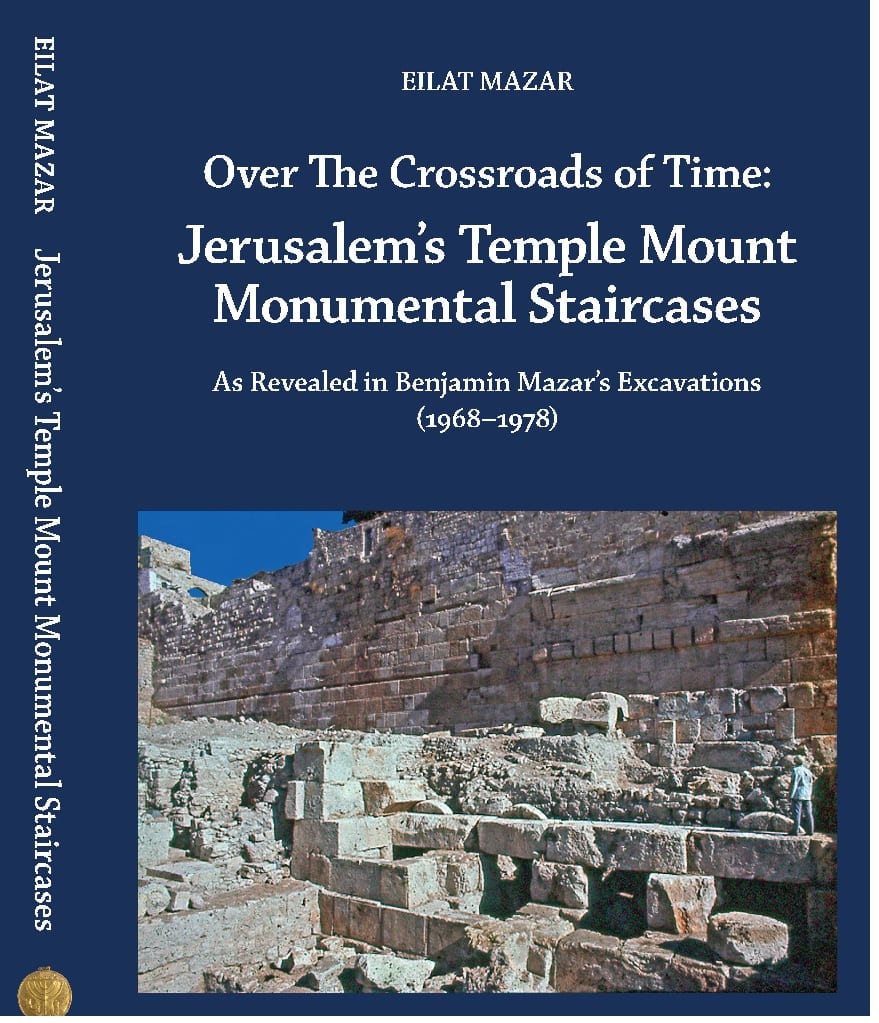By Guest: Dr. Eilat Mazar
Taken from The Discovery of the Menorah Treasure at the Foot of the Temple Mount.
Eilat Mazar
Almost every Jew has some personal connection with the seven-branched menorah. -My personal story is bound up with my family.
Prof. Nachum Slouschz, from whom I am descended on my grand-mother’s side, discovered a seven-branched menorah carved in stone inside a fourth-century CE synagogue in Hamat Tiberias, during an excavation he conducted in 1921 on behalf of the Jewish Palestine Exploration Society. This was the first official archaeological excavation conducted by Jews living in the Land of Israel.
My grandfather, Prof. Benjamin Mazar (Maisler), conducted four excavation seasons on behalf of the Jewish Palestine Exploration Society during the years 1936—1940 in Beit Shearim, where R. Judah ha-Nasi, the nasi of the Sanhedrin and the redactor of the Mishnah, lived and was buried. His excavations uncovered magnificent burial systems from the second and third centuries CE, with dozens of inscriptions and decorations that included painted, sculpted, and engraved seven-branched menorah embellishments.
The following year, my paternal great-grandfather, Hayyim Maisler, died in Jerusalem and was buried on the heights of the Mount of Olives, at a location overlooking the City of David and the Temple Mount. A seven-branched menorah resembling one of those from Beit Shearim was engraved on his tombstone.
Yet another time, Benjamin Mazar, excavating on behalf of the Hebrew University of Jerusalem, discovered depictions of the seven-branched menorah in his excavations at the foot of the Temple Mount walls in 1968—1978. These menorot were painted on the entrance lintel and walls of one of the rooms, most probably a synagogue, inside a Byzantine-period building that was unearthed at the foot of the southwestern corner of the Temple Mount compound.
My three sons, Snir, Dvir, and Ofir, were given Biblical names with the same Hebrew meter as their father’s name, Yair. He had been given this name (meaning “he will give light”) because he was born during the week the Beha’alotekha portion of the Torah is read, in which Aaron is commanded to light the seven-branched menorah:
The Lord spoke to Moses, saying: Speak to Aaron and say to him, “When you mount the lamps, let the seven lamps give light [ya’iru] at the front of the candelabrum” (Numbers 8:1—2).
The discovery of the menorah in our excavations of the Ophel in the spring of 2013, at a distance of only 50m south of the Triple Gate in the southern wall of the Temple Mount, expresses and graphically illustrates the incessant longing of the Jewish people throughout the ages for redemption and renewed independence in their homeland.
If only all of those generations had been able to see the realization of the vision, albeit after hundreds of years, and marvel at the magnificence of the State of Israel and its capital, Jerusalem.
Fate has shone upon us, and we enjoy this redemption and rebirth. Independence, security, and hope are our strength, and the menorah is our symbol.

